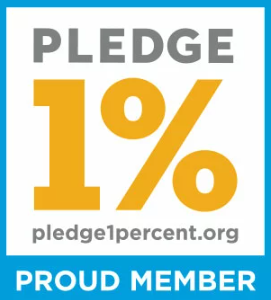While the world may pull you in many directions and introduce distractions, how can you cut through the noise to stay focused on taking action on what truly matters for you?
Forget time management. It’s about managing your energy — not your time.
How do you master your energy? Here’s a simple exercise to get started:
1. First, get clear on the current reality of your energy patterns.
Download a free app like Toggl where you can track activities offline from one activity to the next. At the end of each activity, your job is simply to record whatever activity you were doing. Be neutral and notice if you are judging yourself. Another free app is RescueTime. Once set up, RescueTime will track all the places you visit online in the course of your day. In my experience, the combo of Toggle and Rescuetime gives you the most accurate snapshot of the activities you’re investing your energy into.
It can take one or two days to get used to tracking each activity. Initially, you may find it too hard to enter each activity as you do it. Just try experimenting and see if you can get into a rhythm where, at the end of each activity, you click stop activity and start again — this forces you to then determine what you’ll now be focusing on. If you can persevere through the learning curve that comes with activity tracking, it’s worth the insight gained.
If you have any resistance to tracking using the apps, you can always journal your main activities throughout the day or use a Microsoft Excel sheet to track every thirty minutes with a timer. While manual tracking tends to not be as accurate to reality, any method will do as long as it fulfills the purpose of the exercise to track your activities for a set number of days.
Many of my clients expressed how, in just a few days of tracking their activities, they are more present and able to stay focused in their business and in life. See if you can do it for seven days in a row. I think you’ll be surprised even after two to three days of tracking what you’ll discover.
2. Next, reflect on your energy patterns.
What activities drained you? Which activities energized you? Put a minus sign by activities that were draining and a plus sign by activities that gave you more energy. Notice if there are any other patterns for your sleep, eating or exercise habits.
Sleep is often an area clients struggle with. They can’t sleep deeply, get enough sleep or be consistent with bedtime. Here are some bedtime exercises I recommend by author and mind-body training expert Ilchi Lee that help quiet an overworked brain:
Rollbacks: Sitting down, pull your knees into your chest and roll backward and back up. Focus on massaging your spinal cord. Make sure you have a carpet or mat to cushion your back and be gentle on your neck. Do 10-20 repetitions to warm up your body.
Toe-Tapping: Next, lie down on your back with your legs down and arms by your sides, palms up. Bring your heels together and tap your toes, rotating your entire thigh and leg as you touch your big toes. You’ll generate lots of heat in your legs, bringing all the distracting thoughts in your brain down to your core and legs.
Sleeping Tiger: On your back, raise your legs in the air, making a 90-degree angle with your knees and flex your feet toward you. Lift your arms in front of you, flexing your wrists, so your palms face the sky.
Picture the soles of your feet and palms of your hands like an energy antenna, feeling around for energy until you can find a relaxing place. With each breath, imagine breathing through the soles of your feet and palms of your hand, accumulating hot energy into your core. Hold still in this position for one to two minutes at first, focusing on slowly inhaling and exhaling like a balloon. Eventually, you can gradually build up to holding this position for 10 or even 20 minutes. All of these exercises are like taking an energy shower at the end of the day, clearing your brain of all its thoughts and to-do’s, relaxing the mind and integrating your brain with your body before bed.
3. Write down any learnings, awakenings and observations in your journal.
You’ll naturally discover insights into how easily distractible you are, how much of your day is dictated by your environment or how you have very little rest built into your day. You take it to another level when you capture what you’ve learned on paper. This helps your brain solidify what is being learned by having to articulate your thoughts, then integrate that thought with writing on a page. Now you’re meaningfully connecting your mind and body.
From your learnings, choose at least one new energy habit to experiment with, such as going to bed earlier, creating a grounding morning ritual or moving your body for one minute each time you get up to go to the bathroom. Then, track your new energy habit.
Utilize a bullet journal method of drawing shapes and coloring them in when habits are completed. Or simply write the habit out on a piece of paper, put the days of the week across the top, and mark an “x” for each day you complete the habit.
Business leaders manage what they measure and measure what matters. When you take the time to build new energy habits, you can more effectively manage your energy day to day. Focusing solely on productivity and efficiency at all costs is not as relevant in today’s times, as it fails to integrate the whole human. When you manage your energy — instead of time — you start treating yourself as a whole human being. You become more conscious, more present and focused on a more fulfilling journey.
This article was originally published in Forbes.com
***
Anna S. Choi helps growing, six figure earning, over achieving, conscious business leaders–who are exhausted meeting the demands of their day–prevent burnout as they scale their impact. They want to build habits for staying happy, energized, and focused to perform at their optimum given the demands, complexities, and uncontrollable environments that suck up their energy. Learn more at www.annasunchoi.com.






